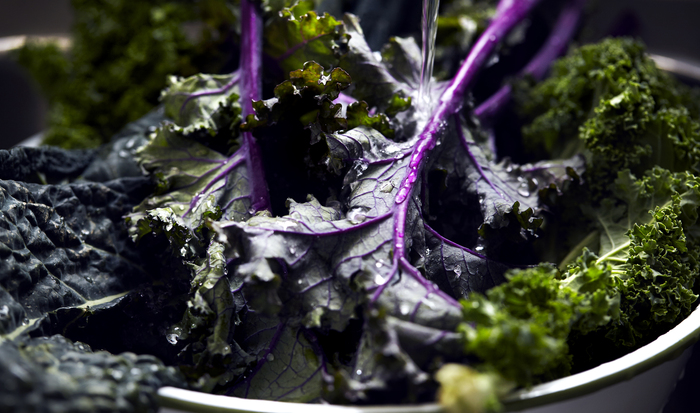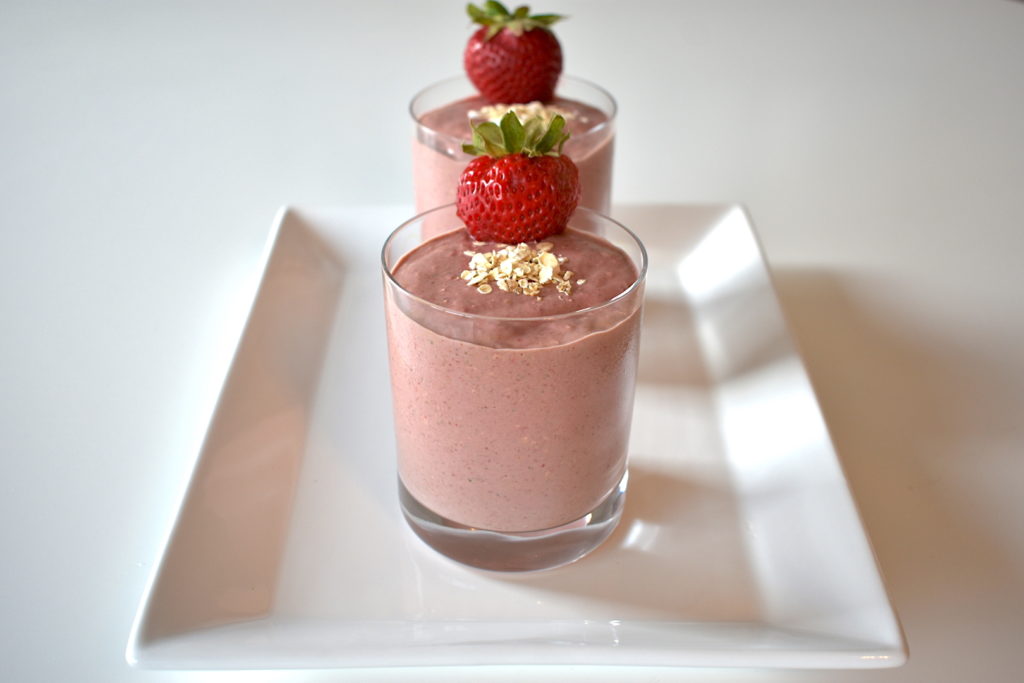
Join PN Level 2 for less than $9 USD/day! Affordable monthly payments now open.

Kale is a highly nutritious leafy green vegetable. Kale is very nutrient-dense: one cup contains just 8 calories but plenty of iron, calcium, vitamins C, K, and A, as well as antioxidants like carotenoids and flavonoids. It even offers omega-3 fatty acids. For these reasons it is sometimes considered a “superfood.” Fresh kale is sold in bunches; look for crisp, bright leaves without visible wilting or yellowing. Before eating, remove the thick, fibrous stalk running down the center of the leaves. Then cook according to preference: you can add it raw to a salad, braise or sautee it, bake it into crispy chips, or puree it with fruit in your smoothie.
Kale is a vegetable (technically a brassica) with green or purple leaves. Kale is grown throughout the summer, fall, and sometimes even into late winter.
Various cultivars exist, including Scotch kale (also called Curly kale), which has tight, curly leaves, and Tuscan kale (also called Black or Dinosaur kale), which has flatter, pebbled leaves.
Depending on the cultivar, kale leaves can be curly or flat, with a thick, fibrous stalk running down the center of the leaves. Kale is most commonly green, but shades vary, ranging from light green, to dark green, to deep purple.
One cup of loosely packed kale contains about 8 calories, 0.7g of protein, 0.2g of fat, 1.4g of carbohydrates, 0.6g of fiber, and 0.4g of sugars.
Kale contains plenty of iron and calcium. It is rich in vitamins C, K, and A. Kale also contains antioxidants, such as carotenoids and flavonoids, and omega-3 fatty acids. For these reasons it is sometimes considered a “superfood.”
Fresh kale is sold in bunches. Look for crisp, bright leaves without visible wilting or yellowing.
Well-stocked grocery stores sometimes sell pre-washed “baby kale” with other boxed lettuces, and chopped, frozen kale in the freezer section.
Store fresh, unwashed kale in an opened plastic bag in your refrigerator’s crisper. Kale will usually stay fresh for three days.
Before eating kale, remove the tough fibrous stems that run through the middle of each leaf. You can remove them by slicing the leaf off each stalk with a sharp knife.
Wash kale by rinsing it thoroughly in a bowl filled with cold water. Lift the kale out of the water; any grit should have sunk to the bottom. Repeat this process if the kale was especially dirty or gritty. Dry kale thoroughly in a salad spinner or with clean dish towels.
Kale can be chopped and eaten raw: this works best with baby kale (sometimes sold as packaged salad greens in the grocery store) or the smaller inner leaves of the kale, which are more tender.
Hardier leaves benefit from being thoroughly cooked. This can be done through steaming, sautéing, or braising.
Kale can also be substituted for spinach in your favorite recipes, though it requires more cooking time. Like spinach, kale pairs well with rich flavors such as bacon, cream, soft cheeses, and white (cannellini) beans. Kale can also benefit from a hint of sweetness with additions like tomatoes or sweet potatoes.
To braise kale:
Heat 2 tsp of coconut oil or olive oil at medium heat in a sauté pan. When oil is hot, add ½ small onion (diced) and 1 clove of garlic (minced). Stir until onion is translucent, then add chopped kale.
Note: depending on quantity you may have to add the kale in batches; as it wilts, it shrinks and you will have more room in your saucepan.
When all kale has been added and is starting to wilt, turn the heat up to medium-high and add ¼ cup of liquid of your choice: chicken stock, white wine, or water are all suitable options. Add a sprinkle of salt and pepper. Let the liquid cook down while occasionally stirring the kale. Let the kale cook for approximately 15 minutes. Add more liquid if it reduces too quickly and the pan becomes dry before cooking is complete.
To make kale chips:
Heat oven to 375F. After washing, thoroughly drying, and removing the tough stems, roughly tear or chop the kale into pieces and toss with a little olive oil. Lay the kale on a baking sheet, making effort to keep space between each piece. Don’t pile or overlap the kale, or it may go soft instead of crispy during roasting.
Roast the kale on a middle rack for 5 minutes. Remove the baking sheet and toss the kale with tongs, making sure it is spread evenly. Then return to the oven for 7 – 10 minutes. The kale should be very crispy when finished.
Sprinkle the kale with salt and any additional flavorings of your choice (lemon zest or parmesan cheese are both good options). Enjoy as you would potato chips.

This kale smoothie is sure to satisfy! Enjoy as a breakfast, snack, or scrumptious dessert.
Prep Time: 5 minutes Cook Time: 0 minutes Yield: 2-4 servings
Put all ingredients into your blender or food processor and blend until smooth, scraping the sides of your blender or food processor as needed. The liquid will be fairly thick. If you prefer a smoothie that is more liquid, add a bit more water.
Once blended, pour into 2-4 cups (depending on the size of your cups).
Best enjoyed right away. If there are leftovers, store them in the fridge or freeze and turn into popsicles!
Enjoy!
Precision Nutrition’s Encyclopedia of Food expands every single month as we highlight new foods and showcase beautiful food photography. If you’d like to stay up to date, simply click this link. From there, we’ll send you a FREE copy of our recipe book. We’ll also let you know when new and delicious foods are added to the site.
Kale is a highly nutritious leafy green vegetable. Kale is very nutrient-dense: one cup contains just 8 calories but plenty of iron, calcium, vitamins C, K, and A, as well as antioxidants like carotenoids and flavonoids. It even offers omega-3 fatty acids. For these reasons it is sometimes considered a “superfood.” Fresh kale is sold in bunches; look for crisp, bright leaves without visible wilting or yellowing. Before eating, remove the thick, fibrous stalk running down the center of the leaves. Then cook according to preference: you can add it raw to a salad, braise or sautee it, bake it into crispy chips, or puree it with fruit in your smoothie.